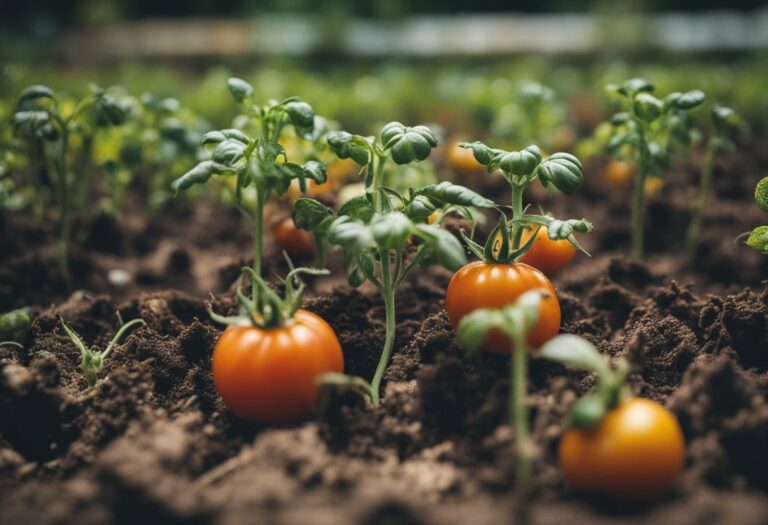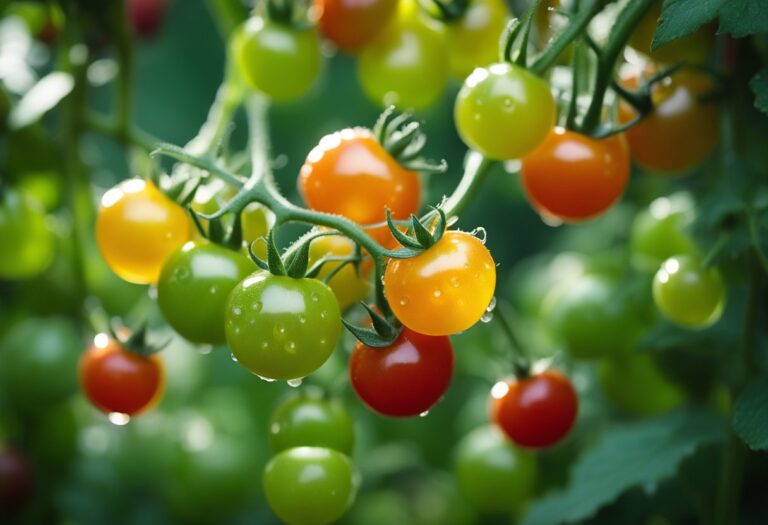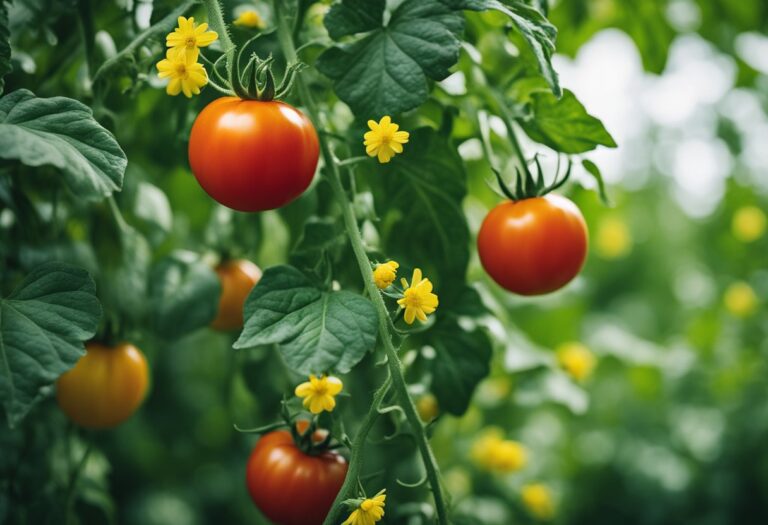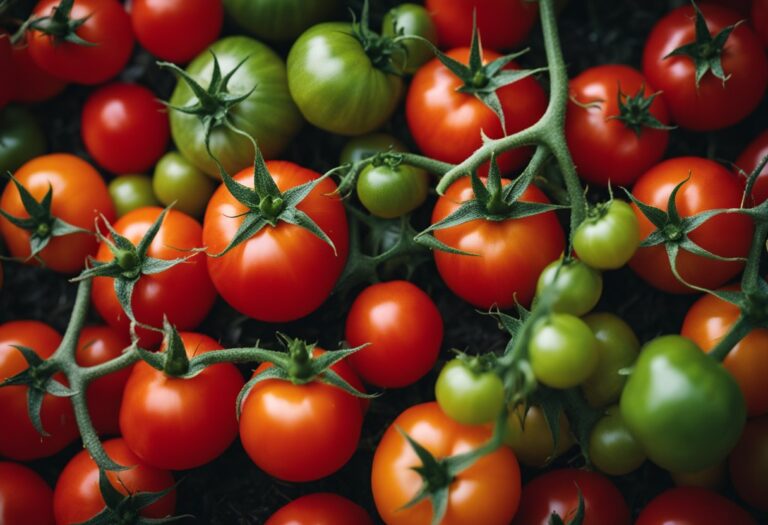Tomato Seeds: A Comprehensive Guide to Growing Your Own Tomatoes
Growing your own tomatoes starts with choosing the right seeds. Tomato seeds come in many varieties, including hybrids and heirlooms. Selecting the proper seeds based on your taste preferences and garden conditions can lead to a successful harvest.
Understanding the basics of tomato seed cultivation is crucial for every gardener. From proper planting techniques to knowing when to harvest, each step can affect the flavor and quality of your tomatoes. Learning about the nutritional benefits of tomatoes can also inspire you to incorporate them more into your meals, making your gardening efforts worthwhile.
Key Takeaways
- Knowing your tomato seed options helps you make informed choices.
- Proper cultivation techniques ensure a healthy harvest.
- Tomatoes offer significant health benefits and nutritional value.
Botanical Classification
Understanding the botanical classification of tomatoes helps you appreciate their diversity and origin. This section explores the family and genus of tomatoes, as well as cultivar variations that showcase their adaptability.
Family and Genus
Tomatoes belong to the family Solanaceae, commonly known as the nightshade family. This family includes other important plants like potatoes, peppers, and eggplants. Within this family, tomatoes are classified under the genus Solanum. The scientific name for the common tomato is Solanum lycopersicum.
This classification highlights important characteristics that tomatoes share with their relatives. Many of these traits influence how you grow and care for tomato plants. The Solanum genus includes various species, each with distinct traits that can suit different growing conditions.
Cultivar Variation
Cultivars are specific types of plants cultivated for particular traits. Tomatoes have numerous cultivars, allowing for a wide range of flavors, colors, and sizes. Some popular cultivars include Roma, Beefsteak, and Cherry tomatoes. These variations can affect taste, texture, and usage in cooking.
When choosing cultivars, consider factors like climate, disease resistance, and growing season. For example, determinate varieties produce fruit all at once, while indeterminate types continue to grow and yield throughout the season. This information helps you select the best type for your gardening needs.
Cultivation Techniques
To grow healthy tomato plants, you need to focus on three main areas: selecting the right seeds, using effective planting methods, and meeting the growth requirements for optimal development.
Seed Selection
Choosing the right seeds is essential for successful tomato cultivation. Look for seeds that are disease-resistant and suited for your climate. Popular varieties include Beefsteak, Roma, and Cherry tomatoes. When purchasing seeds, check the germination rate on the packet; a higher rate indicates better viability. Additionally, consider heirloom seeds for unique flavors and characteristics. If you want to save money, look for seed exchanges in your community. Selecting high-quality seeds ensures a strong start for your plants and leads to a more productive harvest.
Planting Methods
When it’s time to plant your seeds, start indoors about 6-8 weeks before the last frost date. Use seed trays or small pots filled with seed-starting mix. Plant the seeds about ¼ inch deep and keep the soil moist but not soaked. Light is crucial, so provide adequate natural or artificial light to prevent leggy seedlings. Once seedlings develop true leaves, thin them to one plant per cell to improve growth. After your last frost, gradually acclimate your seedlings outdoors over a week before transplanting them into the garden. Ensure they’re spaced about 18 to 24 inches apart to provide ample room for growth.
Growth Requirements
Tomatoes thrive in warm temperatures, so ensure the soil is above 70°F before transplanting. They need full sun, ideally 6-8 hours of sunlight daily. Water your plants consistently, aiming for deep watering to encourage root growth. Avoid wetting the leaves, which can lead to disease. Mulch around the plants to retain moisture and suppress weeds. Fertilize every 4-6 weeks with a balanced fertilizer to support growth. Regularly check for pests and diseases, addressing any issues promptly. Meeting these requirements helps ensure your tomato plants grow strong and healthy, leading to a bountiful harvest.
Propagation
Propagation of tomato seeds involves essential techniques for saving seeds and understanding proper germination conditions. By mastering these aspects, you can ensure successful growth and a healthy crop.
Seed Saving Techniques
To save tomato seeds, choose ripe, healthy tomatoes. Cut the fruit in half and scoop out the seeds along with the surrounding gel. Place the seeds in a jar filled with water. Let them ferment for 2-4 days. This process helps remove the gel, making seeds easier to dry.
Once fermentation is complete, rinse the seeds with fresh water. Spread them out on a paper towel or a screen to dry for about a week. Store the dried seeds in a cool, dry place. Use labeled envelopes or containers to keep track of different varieties. Saving your seeds can help maintain your favorite tomato strains.
Germination Conditions
Tomato seeds need specific conditions to germinate. Start with high-quality seeds and a good seed-starting mix. Keep the soil moist but not soggy. A temperature range of 70-85°F (21-29°C) is ideal. You can use a heat mat to maintain warmth.
Light is also crucial. If you don’t have bright natural light, consider using grow lights. Once the seedlings sprout, provide 12-16 hours of light daily. As they grow, thin out the weaker plants to give each seedling enough space. This encourages strong growth and prepares them for transplanting outdoors.
Health and Nutrition
Tomato seeds are not only nutritious but also packed with health benefits. Understanding their nutritional value and how they can support your well-being is essential.
Nutritional Value
Tomato seeds are small but mighty when it comes to nutrition. They contain healthy fats, fiber, and essential vitamins and minerals. A typical serving of tomato seeds provides:
- Calories: About 20-30 calories
- Protein: Approximately 1 gram
- Fiber: Around 1 gram
- Fats: Less than 1 gram, mostly unsaturated
Additionally, tomato seeds provide vitamins such as vitamin K, which supports bone health, and vitamin C, an antioxidant that boosts your immune system. This unique profile makes them a great addition to your diet.
Health Benefits
Incorporating tomato seeds into your meals can offer several health benefits. They may help:
- Improve Digestion: The fiber in tomato seeds aids in digestion and can prevent constipation.
- Enhance Heart Health: Tomato seeds contain antioxidants that can support heart health by reducing cholesterol levels.
- Boost Immunity: The vitamin C found in tomato seeds helps strengthen the immune system, making it easier for your body to fight infections.
Furthermore, the nutrients in tomato seeds may play a role in anti-inflammatory processes, promoting overall health. By including them in your diet, you could support various aspects of well-being.
Harvesting and Storage
Proper harvesting and storage of tomato seeds are vital for successful planting in the next growing season. You should pay attention to the timing of harvesting as well as the conditions for storing the seeds.
Harvesting Timeframe
The best time to harvest tomato seeds is when the tomatoes are fully ripe. Look for firm, bright-colored tomatoes. You should wait until they start to soften. This ensures that the seeds inside are mature.
To gather seeds, cut the tomato in half and scoop out the pulp and seeds. Place this mixture in a sterilized container. Fermentation is important in this process. Allow the mixture to sit for 2-3 days in a warm location. Stir it daily. You will see bubbles, which indicates that fermentation is working.
After fermentation, the seeds can be rinsed and dried. Proper drying is essential to prevent mold growth. Spread them on paper towels in a dry space for about a week.
Storage Conditions
Proper storage is key to keeping tomato seeds viable for the next season. Once the seeds are dry, store them in a clean, dry container. Glass jars with tight-fitting lids are ideal.
Keep the jars in a cool, dark place. An ideal temperature is between 50°F and 70°F. Avoid areas with high humidity, as moisture can ruin seeds.
Label each jar with the seed type and harvest date for easy reference. Check your seeds periodically for signs of moisture or mold. Storing them in a refrigerator can extend their life further, preventing pests and maintaining quality.
Frequently Asked Questions
This section addresses common questions about starting and saving tomato seeds. You will find specific guidance on the best practices and techniques for growing tomatoes from seeds effectively.
What is the best month to start tomato seeds indoors?
You should start your tomato seeds indoors about 6 to 8 weeks before the last frost date in your area. March or April is usually a good time, but this can vary based on your local climate.
Can I save tomato seeds for next year, and if so, how?
Yes, you can save tomato seeds for next year. To do this, choose ripe tomatoes, scoop out the seeds with the pulp, and place them in a jar. Let the mixture ferment for a few days, then rinse and dry the seeds before storing them.
How do you start tomato plants from seed?
To start tomato plants from seed, fill seed trays or pots with seed-starting mix. Place the seeds on top, cover them lightly with soil, and water them to keep the soil moist. Provide warmth and light for optimal growth.
What are the steps to germinate tomato seeds successfully?
For successful germination, ensure your seeds are in a warm environment between 70-80°F. Keep the soil consistently moist but not soggy. Once seedlings appear, provide ample light to prevent them from becoming leggy.
Are there any special considerations for planting heirloom tomato seeds?
When planting heirloom tomato seeds, it’s important to choose disease-resistant varieties. Heirloom seeds may require more care and attention to prevent pests and diseases, as they are often less resilient than hybrid varieties.
What is the proper way to store tomato seeds?
To store tomato seeds properly, keep them in a cool, dark, and dry place. Use an airtight container to protect them from moisture and pests. Label your seeds for easy identification when planting time arrives.




